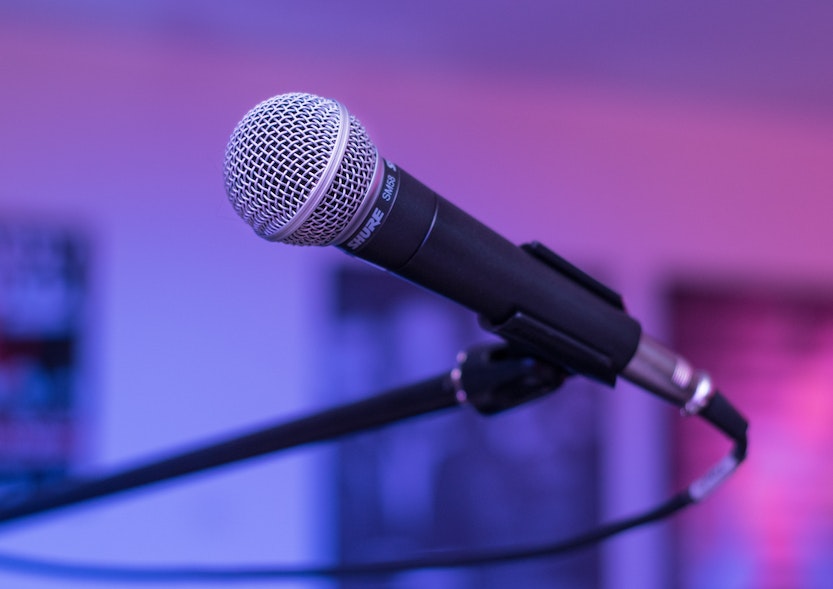The dynamic range of a microphone is one feature that is frequently mentioned, but not always fully understood, when selecting a microphone for professional audio recording, podcasting, music production, or broadcasting. This attribute plays a critical role in the overall performance and versatility of a microphone. To get the most out of your audio equipment, it’s important to know what a “good” dynamic range is, whether you’re a novice musician, a seasoned sound engineer, or a content creator. In this article, we’ll explore the concept of dynamic range in microphones, why it matters, how it’s measured, and what range you should look for depending on your use case.
What is Dynamic Range?
Dynamic range is defined as the difference between the quietest sound a microphone can capture (its noise floor) and the loudest sound it can handle without distortion (its maximum sound pressure level, or SPL).
Most of the time, it is measured in decibels (dB). The microphone can accurately record a wider range of volume levels—from whispers to rumbling drums—within a higher dynamic range without introducing noise or distortion.
The Formula:
Dynamic Range = Maximum SPL – Self-Noise (in dB)
Essential Elements of Dynamic Range
Understanding dynamic range’s two boundaries is helpful for fully comprehending it:
1. Self-Noise (Equivalent Noise Level)
This is the noise that the microphone makes by itself when there is no sound. Condenser microphones, which require active circuits, are particularly susceptible to this problem, which typically arises from the internal electronics.
• A signal with less self-noise is cleaner.
• Common self-noise values range from 5 dBA (very quiet) to 20 dBA (moderate).
2. Maximum SPL (sound pressure level)
This is the loudest sound the microphone can capture without distortion or clipping.
For instance, recording a snare drum hit or shouting directly into a microphone.
• The majority of good microphones can handle SPLs between 120 and 150 dB.
• Some dynamic microphones can go even higher, making them appropriate for loud sources like guitar amps and drum machines.
What is an acceptable dynamic range?
There’s no one-size-fits-all answer. The ideal dynamic range depends on how and where the microphone will be used.
But as a general guideline:
Use the recommended dynamic range in the case Voiceovers/Podcasts 85–100 dB
Acoustic Instrumentation 90–110 dB
100–120 dB Live Sound (Vocals) Loud Instruments (Drums, Guitar Amps) with more than 120 dB Studio Recording 110–130 dB
In summary, most people think that a dynamic range of at least 100 dB is good. Premium studio microphones may offer ranges above 120 dB, making them suitable for a wide array of applications.
Types of microphones and the typical dynamic ranges they have
1. Condenser Speakers
Due to their sensitivity and precision, these are the preferred microphones for studio settings.
• Advantages:
Excellent for capturing detail, low self-noise, and a wide dynamic range
• Drawbacks:
necessitates phantom power and is more sensitive to ambient noise.
Example:
The Neumann TLM 103 offers a dynamic range of around 131 dB, making it excellent for vocal and instrumental recordings.
2. Dynamic Microphones
Durable and less sensitive to quiet and high frequencies.
• Pros: High SPL handling, less susceptible to distortion from loud sources.
• Cons: Narrower frequency response and dynamic range compared to condensers.
Example:
Shure SM7B has a dynamic range of about 100–110 dB, great for vocals, especially in untreated spaces.
3. Ribbon Audio Devices
A dynamic microphone that is prized for its warm, vintage sound and is more delicate.
• Pros: Smooth frequency response, good for mid-range dynamics.
• Cons: less dynamic range and lower maximum SPL than condensers. For instance, the Royer R-121 has a usable dynamic range of approximately 90–100 dB.
Why Dynamic Range Is Important
1. Taking in Nature’s Sound
The microphone has a wide dynamic range, which enables it to capture the intensity of loud passages and the subtle nuances of softly spoken words without compressing or distorted the signal.
2. Post-Processing Flexibility
When a recording has a wide dynamic range, you gain more flexibility in post-production. You can compress, EQ, or limit the sound without significant degradation.
3. Superior Audio Quality
Whether you’re recording a podcast or a symphony orchestra, dynamic range directly impacts the perceived quality of your recordings.
Factors That Influence Microphone Dynamic Range
1. Preamplified Microphone Quality
Even if your mic has a great dynamic range, a noisy or poor-quality preamp can bottleneck its performance.
2. Audio Connection
In order to preserve the mic’s full dynamic range, your analog-to-digital converter (ADC) needs to support high-resolution input. Find interfaces that can handle 24-bit depth.
3. Room Acoustics
Recording in a poorly treated room increases ambient noise, effectively raising the noise floor and reducing your real-world dynamic range.
4. Recording Levels
Setting proper gain levels ensures you’re utilizing the available dynamic range. Too low, and you risk signal noise; too high, and you risk clipping.
How to Maximize Your Microphone’s Dynamic Range
• Use a pop filter to reduce plosives, which can create sudden peaks.
• Place the microphone in the right spot—close enough to the source to cut down on background noise but not so close that it could overload.
• To maintain signal integrity, make an investment in high-quality interfaces and preamps.
• Use limiters or compressors carefully to manage dynamics without squashing the signal too much.
Real-World Example
Consider a singer-songwriter recording vocals in a home studio. If the microphone has:
• Self-noise: 7 dBA
• SPL maximum: 135 dB The dynamic range of the mic is then 128 dB.
This is excellent and means it can record everything from whispered lyrics to full-throated belting without additional noise or distortion, assuming the rest of the signal chain is of similar quality.
Microphones with Excellent Dynamic Range (2024-2025 Picks)
Type of Model Dynamic Range Neumann TLM 103 Condenser ~131 dB
Condenser Shure KSM44A, 128 dB 130 dB Sennheiser MKH 416 Shotgun/Condenser 127 dB, Rode NT1 5th Gen Condenser RE20 Dynamic Electro-Voice 125 dB Shure SM7B Dynamic ~100–110 dB
Conclusion
One of a microphone’s most important but underrated features is dynamic range. It defines the range of audio that the microphone can faithfully reproduce without introducing distortion or noise, from the faintest whisper to the loudest scream. For most professional and semi-professional applications, a dynamic range of 100 dB or more is a good benchmark. Condenser microphones typically offer the widest ranges and are ideal for studio recordings. However, dynamic mics with slightly narrower ranges still hold their ground in live and untreated environments.
Ultimately, the best microphone for you will depend not just on dynamic range, but on how all its specs—including frequency response, polar pattern, and SPL handling—fit your specific recording needs.
Understanding and making use of dynamic range can be the key to making your sound shine, whether you’re recording a podcast in your bedroom or an orchestra in a hall.



